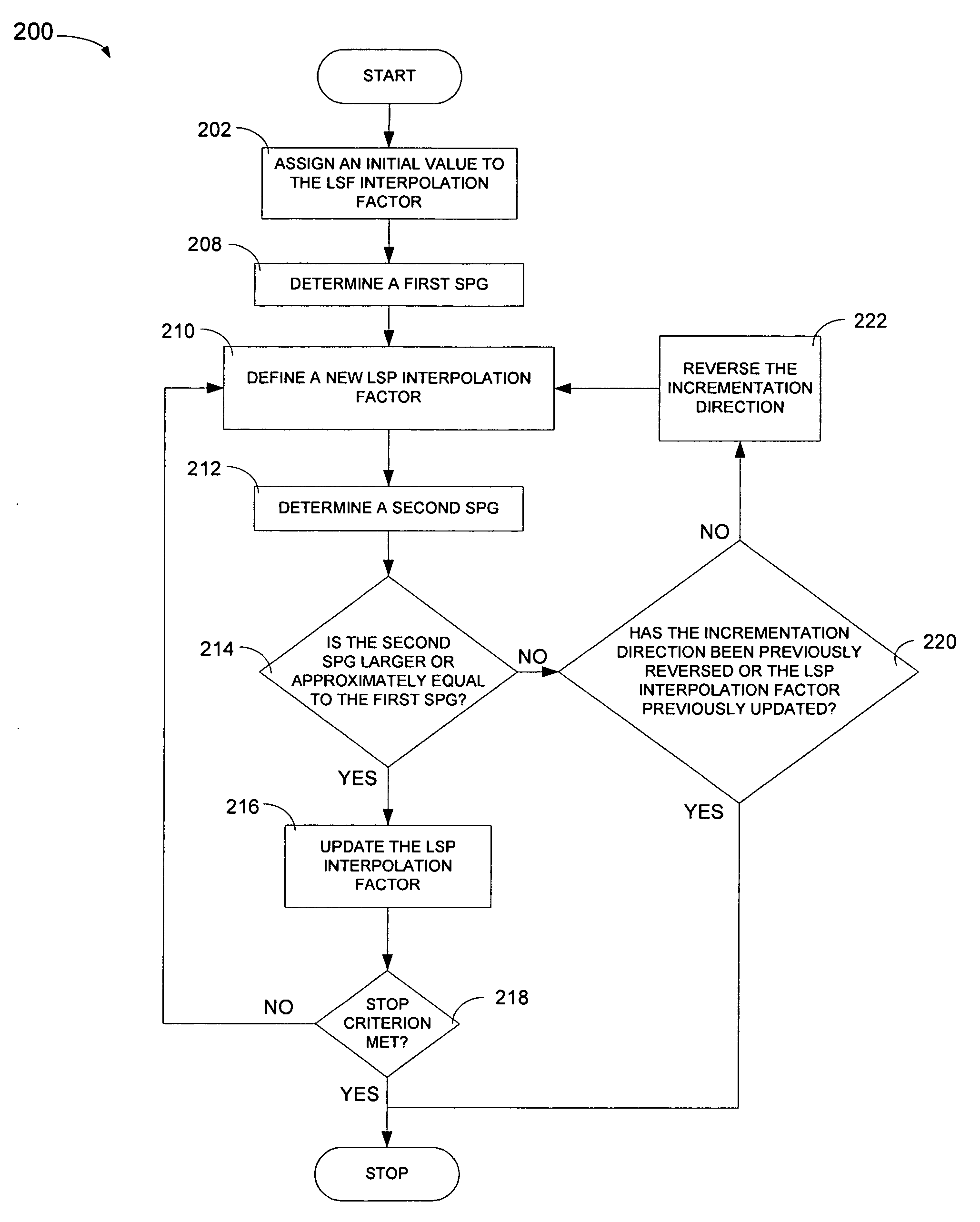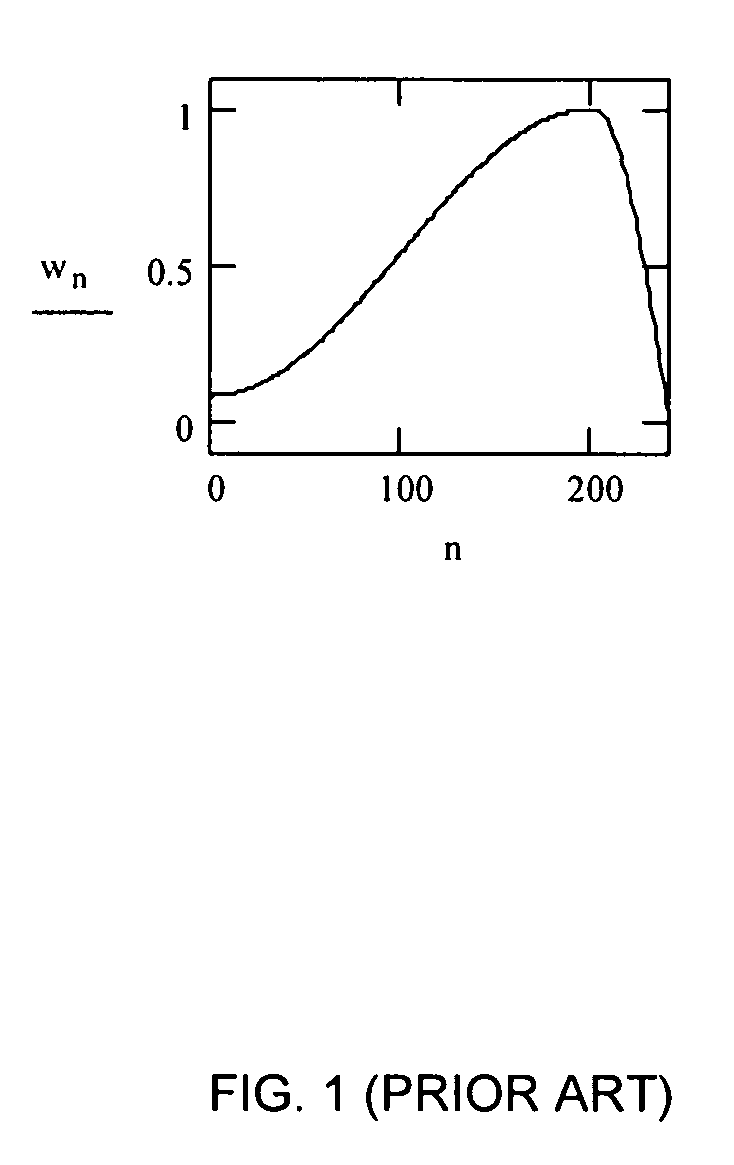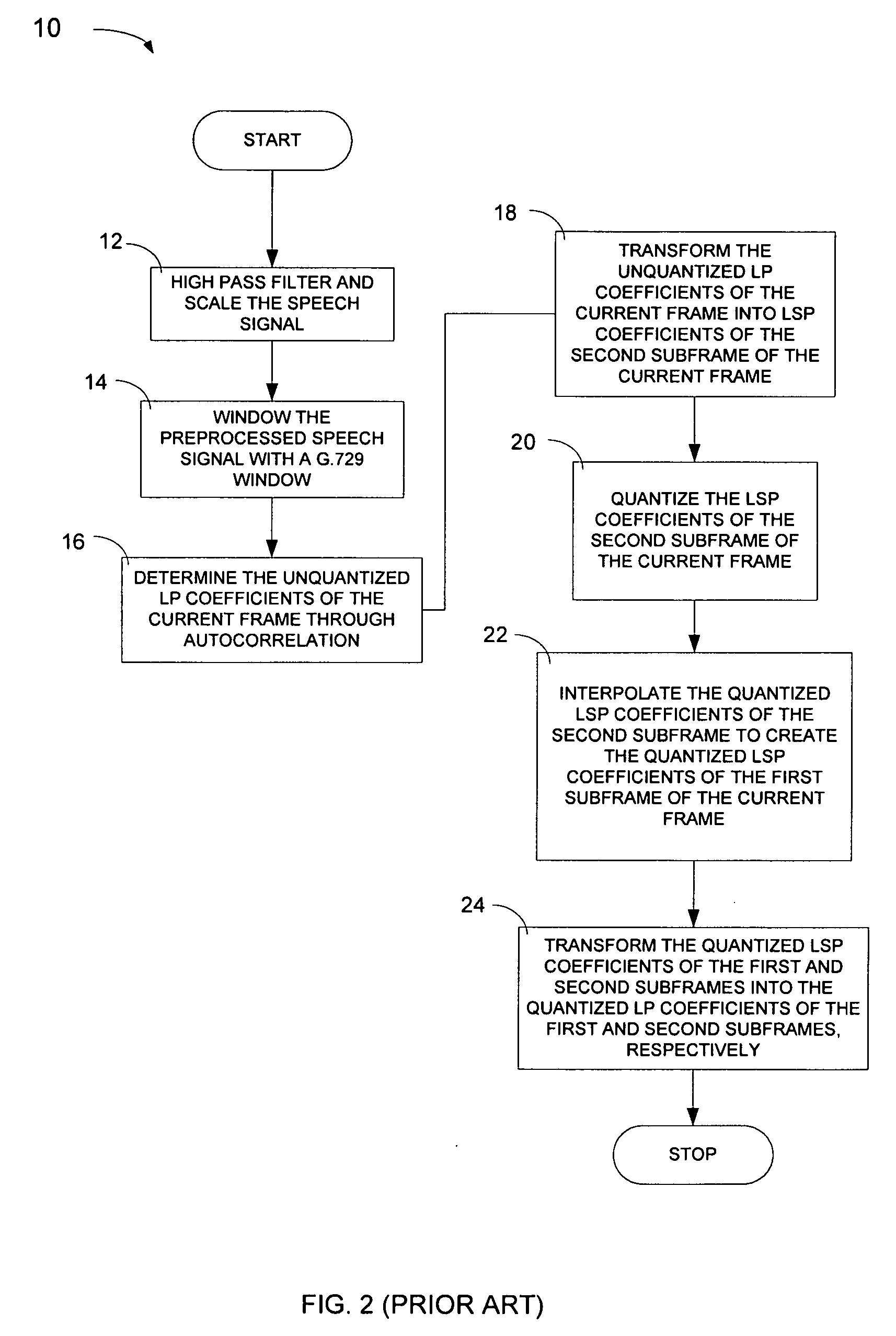Optimized windows and interpolation factors, and methods for optimizing windows, interpolation factors and linear prediction analysis in the ITU-T G.729 speech coding standard
a technology of interpolation factor and window, applied in the field of optimizing windows and interpolation factors, and optimizing windows, interpolation factors and linear prediction analysis, can solve the problems of affecting the minimum total prediction error, the analysis and synthesis interval might not be the same, and the direct sampling system requires a large bandwidth and memory capacity, so as to reduce the future buffering requirement, the effect of reducing the number of windows and reducing the number of times
- Summary
- Abstract
- Description
- Claims
- Application Information
AI Technical Summary
Benefits of technology
Problems solved by technology
Method used
Image
Examples
Embodiment Construction
[0050] Optimization procedures have been developed which decrease the computational load and / or buffer requirements for, and in some cases, improve the quality of speech signals reproduced by the G.729 standard. These optimization procedures include procedures for optimizing the shape of the window used during LPA (“window optimization procedures”) and optimizing the LSP interpolation factors (“LSP interpolation factor optimization procedures”). Additionally, optimized windows and optimized LSP interpolation factors are obtained through the aforementioned methods, respectively. These optimized windows and LSP interpolation factors are used either alone or in combination to create optimized LPA procedures which are then made part of a speech coding standard, such as the G.729 standard, to create an improved standard.
[0051] The window optimization procedures are generally based on gradient-descent based methods, through the use of which window optimization may be achieved fairly prec...
PUM
 Login to View More
Login to View More Abstract
Description
Claims
Application Information
 Login to View More
Login to View More - R&D
- Intellectual Property
- Life Sciences
- Materials
- Tech Scout
- Unparalleled Data Quality
- Higher Quality Content
- 60% Fewer Hallucinations
Browse by: Latest US Patents, China's latest patents, Technical Efficacy Thesaurus, Application Domain, Technology Topic, Popular Technical Reports.
© 2025 PatSnap. All rights reserved.Legal|Privacy policy|Modern Slavery Act Transparency Statement|Sitemap|About US| Contact US: help@patsnap.com



